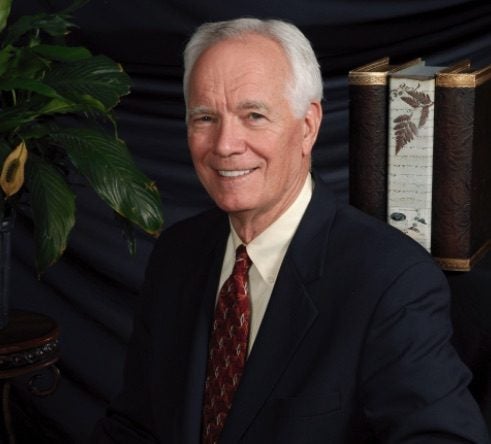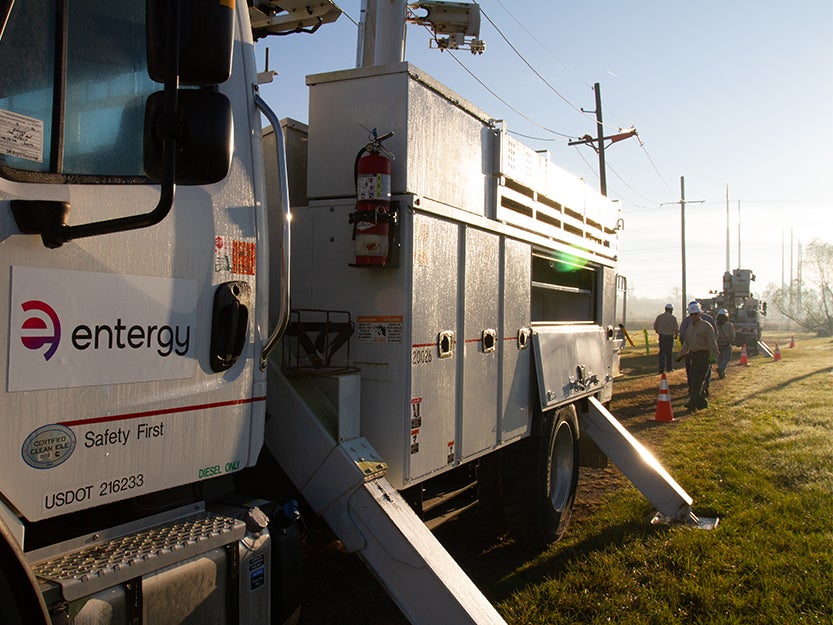Economist discusses fate of energy prices
Published 11:59 am Wednesday, October 13, 2021

- Loren C. Scott is president and founder of Loren Scott and Associates, a firm that provides economic consulting. He is one of the 32-member National Business Economics Issues Council, which meets quarterly to discuss issues of state, national and international interest. (Special to the American Press)
“What’s going to happen to energy prices in the next two years?” That’s just one of the questions Economist Loren Scott answered with his Economic Outlook presented at the Southwest Louisiana Entrepreneurial and Economics Development (SEED) Center in Lake Charles last week. Louisiana is the nation’s second-largest producer of crude oil, if one includes petroleum produced in the Gulf of Mexico.
“I’ve been teaching forecasting techniques for 30 years,” Scott said. “The second most difficult thing to forecast is the price of crude oil. That’s because two-thirds of the world’s oil reserves are under the ground where governments are ruling what happens with it.”
He pointed to how the crude oil price dropped in 2015 when “Saudis suddenly decided they wanted to kill the shale play in the United States and glut the market,” he said.
COVID has added another level of uncertainty. People quit driving and flying. World consumption dropped by 18.4 million barrels per day in the first half of 2020, according to the Scott and Associates Louisiana Economic Forecast for the state and Metropolitan Statistical Areas (MSAs). Oil prices plummeted from $63.27 per barrel in early January 2020 to only $15.06 in just three months. One day in April 2020, the price was at $37 a barrel, which Scott reported was due to a “contractual quirk in the future’s market.”
“We are projecting oil prices will remain relatively stable, going from an average of $67 a barrel this year to $65 in 2022 and $69 in 2023,” Scott said.
That’s less than the $80 or so price in the news now. So, what gives?
“Right now, there’s about 300,000 barrels normally being produced in the Gulf of Mexico that’s shut in, and it’s going to be coming back on the market probably by January if not sooner. This is a temporary issue,” he said. “If you look at the demand for oil next year. It’s expected to go up to about 3.8 million barrels of oil per day.”
The U.S. rig count has rebounded, but is still far from pre-pandemic norms.
Loren stressed the importance of keeping an eye on the Organization of the Petroleum Exporting Countries (OPEC)
“In July, they decided what they’re going to do is start adding 400,000 barrels a day each month through September. That’s 5.8 million barrels coming in from the Gulf of Mexico. I don’t see how the price is going to stay as high as it is right now when all this oil comes on the market. Watch OPEC. Somewhere along the line OPEC is going to have to decide to keep adding oil to the market, which will bring the price way down.”
Louisiana is the fourth-largest state in the U.S. for natural gas production, most of it coming from the Haynesville Shale Play. Scott’s report states: “Natural gas prices play into the Louisiana economy in a number of different ways. Higher prices spur exploration and add jobs, and since Louisiana is the sixth-largest chemical producer, and most of these are first-stage bulk chemicals produced from natural gas, if natural gas prices aren’t too high, chemicals will continue to be made profitably in the state.”
“When you hear people talking about relying on solar and wind,” remember this day,” he said.
Scott’s forecast for natural gas is a little over $3 per million BTU for the next two years. Currently the price is around $6 per million BTUs.
He said to keep in mind this figure is an annual average. Use is seasonal. Also impacting his forecast is the reopening of Southeast Louisiana LNG plants at the end of this year or the beginning of next year. These sites were shut in because of Hurricane Ida damages.
“The other thing that’s going on is that the wind quit blowing in the North Sea, so suddenly those windmills aren’t turning,” he said. Now Europe doesn’t have enough electricity being generated. They are using crude oil to run plants, keeping the demand up for crude oil.”
To compound its problems, Europe outlawed fracking making it necessary to import LNG, good news for the Gulf Coast LNG facilities and the Haynesville Shale Area in Northeast Louisiana.
“We’ll see the rig count popping up,” he said, “and more drilling in the northeast.”
Scott said the high LNG prices in Europe and Asia will not be a real problem for local chemical firms – if natural gas remains at a certain ‘sweet spot – for those plants that use natural gas to make ethane, ethane to make ethylene and ethylene to make plastics and consumer products.
“If you look at the data for September, they’re around $35 (per million BTUs). Ours went up two. Ours is around five. Think about what this means to your area. Chemical firms in Asia, chemical firms in Europe are not going to be able to compete with our chemical firms. That’s one of the things that’s feeding these expansions at Lotte, Sasol and other chemical industries in the area.”
The highlight of Scott’s report for Southwest Louisiana shows this Lake Charles MSA to be the only one of its size in the country that has less people employed than the first month of COVID shutdown. Scott projected 9,000 new jobs in 2022 and another 6,000 in 2023 based on the “heroic assumption” that more federal aid is coming, Driftwood gets investments in place for its $16.8 billion project and at least one large methanol project is announced. The new Isle of Capri (now branded Horseshoe) could add 500 jobs when it opens.





